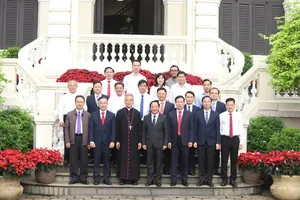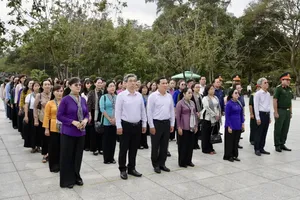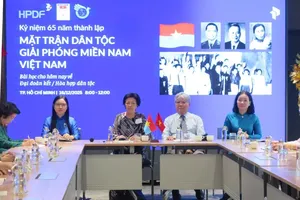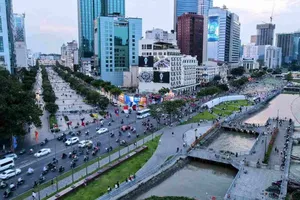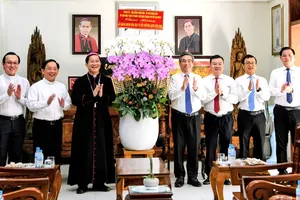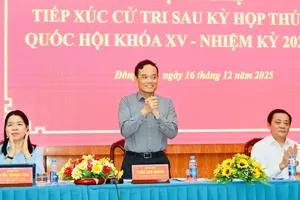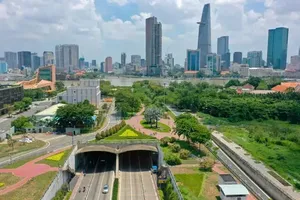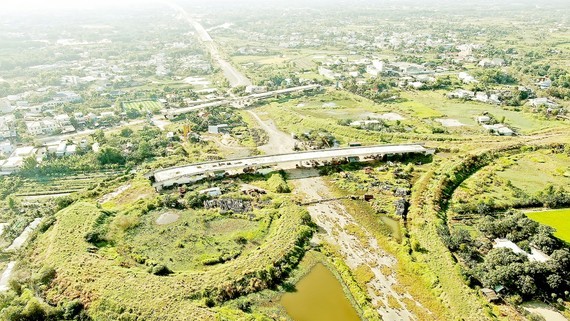
Ben Luc – Long Thanh Expressway is expected to greatly boost traffic flow of HCMC and its neighboring provinces as it can effectively reduce congestions now that trucks from the Southwest do not need to enter the city to reach the Southeast. This expressway is also hoped to lessen the traffic pressure on National Ways No.1A and No.51.
Sadly, problems in land clearance tasks have led to long-term suspension of the useful project. The Southern Expressway Projects Management Unit (SEPMU) informed that the sections passing Binh Chanh District and Nha Be District of HCMC have unresolved land clearance issues with many households, occupying the surface area of 1.93ha and 0.27ha, respectively.
Similarly, the construction site for the intersection between Ben Luc – Long Thanh Expressway and National Way No.1A is still incomplete because one household on the area of 100m2 has not agreed to move. The same state can be seen at the construction site for the intersection between Ben Luc – Long Thanh Expressway and National Way No.50. On the site, many iron bars are scattered dangerously, while the bordering area has become an illegal place for waste disposal.
That is why in May, the Transport Ministry released a formal dispatch on accelerating the progress of land clearance compensation for the project.
The HCMC Traffic Safety Division reported that on average, it costs HCMC about VND2.4 billion (US$102,700) an hour for traffic congestion. This means such an important route as Ben Luc – Long Thanh Expressway is critical to minimize damages for the city. The construction project, starting in 2014 and expected to finish in 2023, has asked for an extension to 2025.
Statistics from the Management Board of Investment and Construction of Urban Traffic Works in HCMC reveal that out of 100 projects under its management, 50% are encountering trouble with land clearance, severely reducing the progress and increasing the needed capital by hundreds or even thousands of billions of VND per project. For instance, the 2-year lateness in the construction project for Ben Thanh – Suoi Tien Metro Route No.1 has raised the needed capital by VND30 trillion ($1.28 billion).
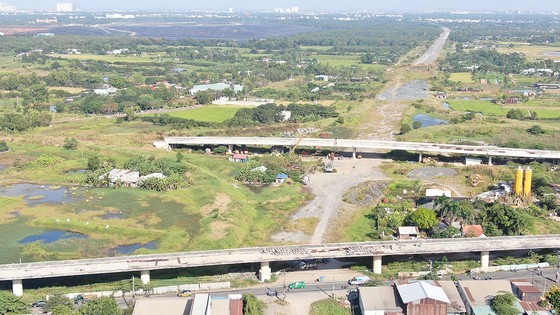
Problems in land clearance have become a hindrance to land resource exploitation as well. The more effectively this valuable resource is exploited, the more quickly the state budget of the related area can expand. However, it is land clearance trouble that prevent the localities from making good use of this resource.
The municipal authorities in HCMC, despite high awareness of this profitable resource since its first project to improve its channels (Nhieu Loc – Thi Nghe project), it could only take back a sufficient area for road building. The plan of using more land for urban beauty improvement could not be done due to financial limits for land compensation and disagreements from residents.
Similarly, the city has planned to exploit the land resource along major roads like Pham Van Dong, Vo Van Kiet, and the stations of Metro Route No.1 (Ben Thanh – Suoi Tien) to expand its budget, but once more unresolved land clearance compensation issues have halted that.
It is estimated that by 2030, HCMC needs over VND970 billion ($40.6 million) for its major traffic construction projects, but the city budget can only afford 30 percent of that. Dr. Tran Du Lich commented that if the land resources are effectively exploited, these infrastructure projects are completely feasible. What is left is the determination of the city leaders and support from related ministries, state agencies in addressing land compensation problems.
Focusing particularly on Ring Road No.3 project of HCMC, Prof. Dr. Dang Hung Vo commented that there is a surface area of 514ha along this road waiting for exploitation to earn profit. Economic and social experts stressed on practical solutions to tackle land compensation issues as well.
Dr. Nguyen Viet Hung, an urban traffic expert, stated that investors and state managers should renovate their thinking on land clearance tasks to pay more attention to great usefulness of these traffic projects when complete. Also, compensation should be logical and satisfying to residents ( with a price of 1.5 times as high as market price), giving them suitable relocation places to live.
Based on that thinking, investors and stakeholders should re-assess and prepare a report on the feasibility of the project, detailing the benefits of the project to the community. It is advisable to expand the size of land clearance to bordering areas of the project (considered that most beneficial area as the land price will increase), which will then be auctioned for capital to other public projects in the planning or budget for land compensation.
Dr. Tran Buu Long from HCMC Institute for Development Studies stressed that land compensation price is the key to successfully address land clearance problems. Therefore, compensation measures and plans must be carefully prepared to ensure the logic and balance between right and obligation of stakeholders.
Until now, HCMC is only successful in exploiting the land resource along Nguyen Huu Tho Street (in District 7 and Nha Be District). The city earns VND800 billion ($34.2 million) and spends VND430 billion ($18.4 million) on road building. Various real estate projects have been launched on these land lots after that, bringing an additional profit of VND260 billion ($11.1 million).
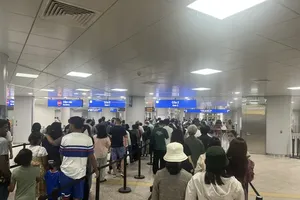
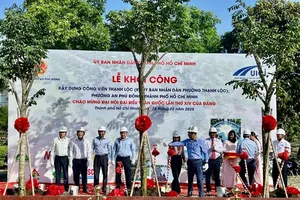
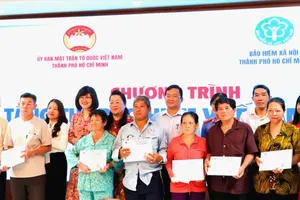
)

